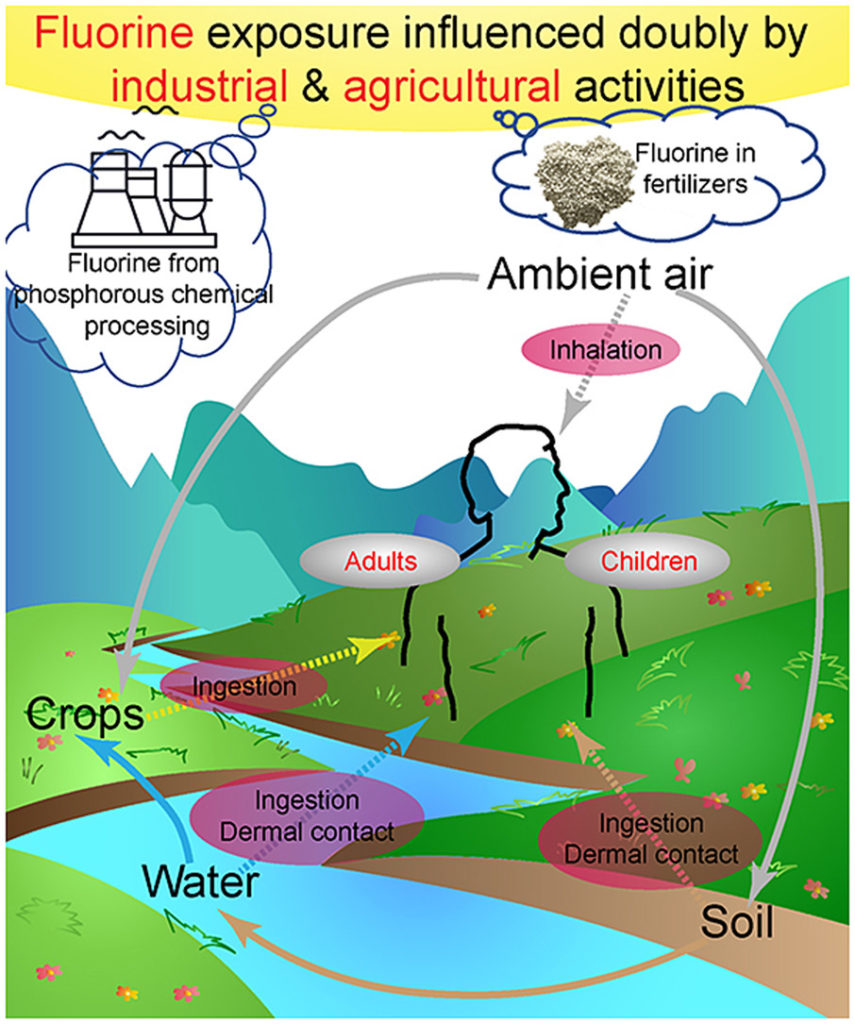Abstract
Highlights
-
- Determining F distribution co-affected by phosphorous industry and agriculture.
- Jointly activities resulted in a superposed elevation of soil F toxicity.
- F exposure from multi-media via multi-pathway was estimated.
- Adults suffered higher exposure risk of F than children.
- Main exposure way of F was dietary ingestion of crops.
The industrial and agricultural activities based on phosphorous can increase the F content in the surrounding area, causing a widespread adverse effect on the organisms. However, the current information on the superposed health risk posed by the multi-exposure to the F contamination in an area jointly affected by agricultural and industrial activities (DA) is limited. Herein, the F distribution in multi-environmental media and the exposure risk to humans by ingestion, inhalation, and dermal contact pathways are studied in an DA. The content of soil water-soluble fluorine (WF) was higher in the DA than in the area individually affected by agricultural activities (SA). This indicated a superposed contribution of the industrial and agricultural activities to increase the F toxicity in the soil. The correlation of the soil pH and the organic matter content with the soil WF concentration in DA suggested an inter-relationship between the soil physicochemical properties and the toxicity of F in the soil by industrial and agricultural activities. Irrigation water was not a major anthropogenic source of the cropland soil F. The large variation in F concentration in the crops (101.8–195.6%) might have originated from the discrepancies in the soil F content and air F concentration. The air F pollution (0.6–1.6 ?g dm?2 d?1) in the area particularly influenced by intensive industrial activities should be important. The exposure of residents to F was mainly from the ingestion of F-enriched crops. The higher exposure of adults to F than that of children could be attributed to more industrial and agricultural outdoor activities, larger exposure area of the skin, and more daily ingestion of F-enriched food by adults. Overall, present insights into the distribution of and the multi-exposure to F may be beneficial for decreasing the adverse F effects on the residents in DAs worldwide.

